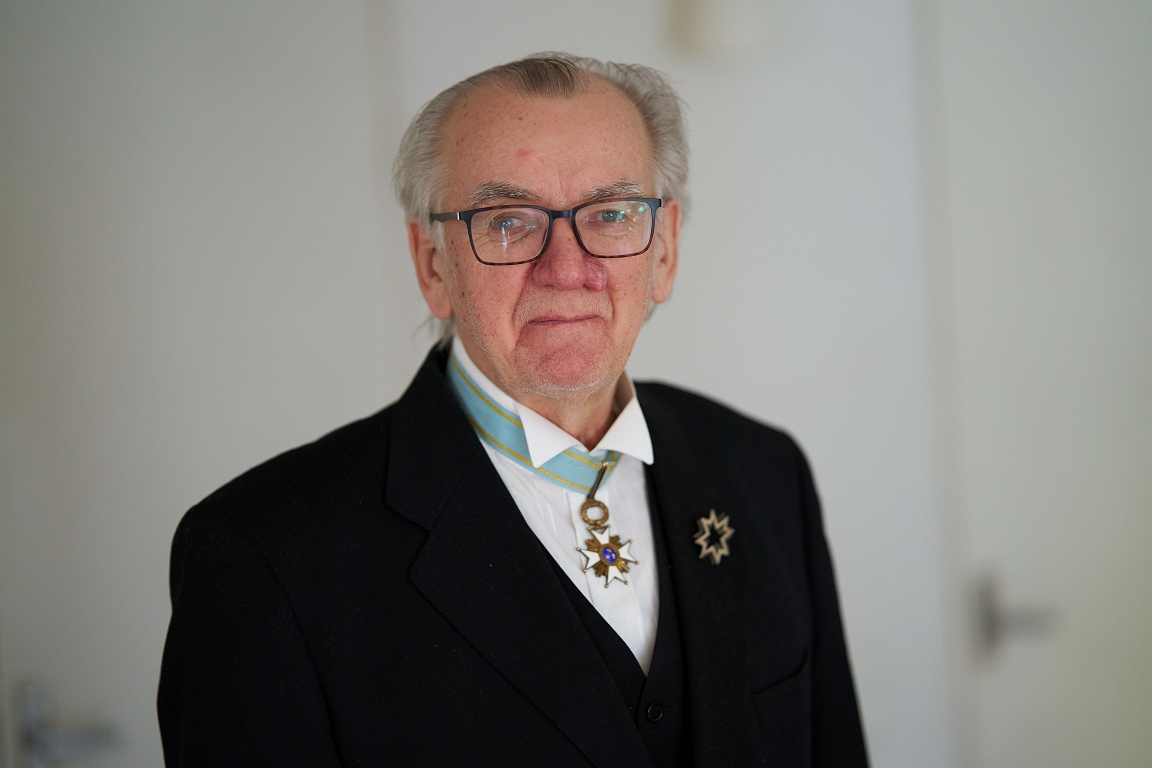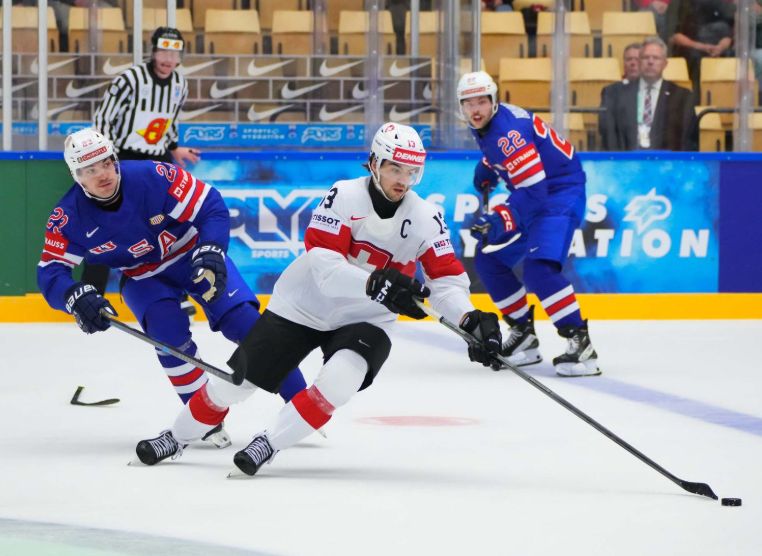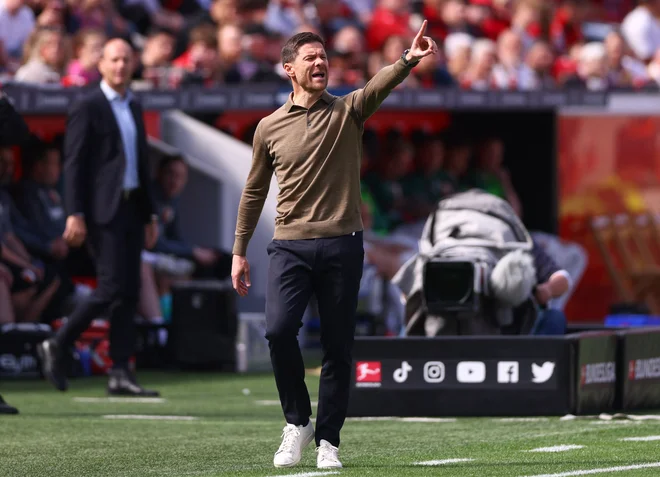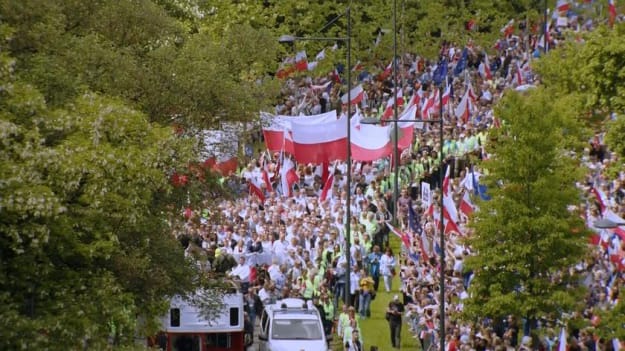What comes from the boys of technical hobby / day

With a small car model, every child wanted to drive down the zigzag track. Jānis Nabokins, a Valmiera, has turned this business from a business. He tells enthusiastically, acts actively, and one could even say: it is his mission to promote the idea of car modelism in Latvia, encouraging them to find a place for the tracks at each center of children and young people.
Track for the World Cup
We meet John on the track for next year’s World Championship in Finland. The tracks are prepared for painting. To realize the configuration, he shows a sketch. « It all starts with the idea, then draws a special program, » says the car modeling track. There are several options offered to the World Cup organizers. « It is similar to raising a house where the Construction Board is accepted, because it is about fire safety standards, the distance along the walls, » explains John. The track will be 44 meters long. This is in line with the standard adopted in recent years. The dynamics of the track are reflected in turns. The bigger the radius, the faster the turn will be. The smaller the slower. Quite parallels with the twists and turns of the F1 track, but you can calculate the average speed.
Design, Material Cutting, Building … John Praises Latvian veneerwhich produces a unique and high -quality material that is superior to others in the world. At least 10 kg of glue is required to glue everything. The track also includes the remote, racing machines, wiring, the track power supply and a very sensitive computer program that can count the circle up to a second for a thousandth.
Work for a couple of months. After that, another transport. But then you just have to put together the track, which can be done in four five hours and the race can start! Even the eyes cannot blink, as professional models are able to develop up to 100 kilometers per hour in the straight sections and the track circle can leave in four seconds. About 150 people from 20 countries participate in the World Automobile Championship. « Our delegation is one of the worst, » John emphasizes.
Among the best
Building tracks for small electric drive car models, Janis Nabokin started eleven years ago, because there was actually no one. Not only the joy of driving, the results are so dependent on quality track. The first order was from Finland. « We said we hadn’t done it before, but they trusted. When we built, everyone was excited. Mcetudarbnica.lv There is still no website because there is no time to make it. Advertising – zero, but we are not short of work. We are able to make ten tracks per year. But these are the ceilings for our capacity, « says John. The tracks are sent from New Zealand to America. » There are only three people around the world who do it professionally – one in Brazil, the other in Australia and the EU in Europe, « says John, and it doesn’t sound like.
However, another thing is with the recognition of domestic youth interests or leisure centers. « In this area I would like to do more. In ten years, we have built new tracks in Latvia in Jelgava, Valmiera, Rūjiena, Salacgriva, Riga – two. Municipalities are investing in educating their county children and expanding their leisure activities and diversifying. » As a good story he tells about cooperation with Riga Children and Youth Center Earlockwhere the director, he met the offer, said that something had long been for the guys. The track has been created within three months. « That’s the case, many children are doing, and for the last three years they win at the Latvian Championships. » Another positive example is Rūjiena, where projects were written with parental care to get European support. « The burnt boiler house was renovated, where the new track was then placed, » says Janis.
Where the engineers begin
Asked how he came to the construction of the tracks, John says that he has tried to work in many different circles in his childhood. He is fascinated by auto modeling from the age of five, when the kindergarten friend’s mom Dzirkstīte, Sturide, took him to Valmiera’s Young Technicians Station, the current Valmiera Youth Center, Vinda. She, by the way, still runs preschool The hobby workshop. « Every boy of Valmiera has made paper models at her at first, » John emphasizes, adding that in Valmiera Winda There is a great place for children and teenagers to go after school. « Even if you do not become a high -end engineer, all you will learn there will be useful. Yes, make a bird cage, hold your hammer in your hand, and know what to do with the seam. Become a construction company managers, high -end electricians, « John lists. He denies stereotyping the belief that children only « sit on mobile phones ». John knows that 90% of those who have begun auto modeling since childhood, later completing RTU as architects, programmers, building constructors or wiring.
By the way, John’s three -year -old son has his own small track at home, and John has shown him how to drive the car. Still, the boy does not understand why he should be brewed if you can at full speed. But next year, John will take his son to VindaLearn to cut out your first car from paper.
Sports or entertainment?
John also shows one of his car models. « There has been a huge leap in technical progress, » he comments, because not only the tracks but also the car models are made. « We have switched to drone engines. Before that, there were motors with rotor and two magnets. Now there are three -faders. We have lifted the power ten times a year compared to the original. We can buy a drone in goods stores. We disassemble the motors, compare, change the bearings.
John also knows everything about the track and models because he has regularly participated in Latvian, Baltic and global competitions. « We have shown ourselves very well in the world. In 2014, 2015, I won the World Cup, » he adds. « Raivis Jansons won from Latvia in 2019 and 2022. »
In each country, auto modeling is a bit different organized. « For example, in Latvia – partly below the Ministry of Education, but the largest burden is on the shoulders of the municipalities in the section Interest education. In the Czech Republic, the state grants funding for infrastructure, new tracks, and world -class competitions. The Czech Republic has a large federation with a five -story building in the center of Prague. It has all possible models – airplanes, ships, robots. The opposite is Sweden, where it is under the control of the private sector. The municipality pays private for children to have the opportunity to practice. In Finland, it will sound funny, this activity is « under the church » because it is this institution responsible for educating people and spending leisure time, « says Janis.
« Latvia is one of the few countries where car modelism is no longer qualifying as a sport, but as technical creativity. In Estonia, Lithuania, Czech Republic, auto model is sports. In Latvia, it does not work because there is no private club. The holder who is the municipality, « explains Janis. A wide space is needed to install the track – at least 7 x 15 or 8 x 12 meters. Ideally, it is a gym to have space for the audience as well. Car modeling for many is the step to the big motorsport. John names a number of popular motorsports who have started to drive and then sit behind the wheel.
Willpower to win
This is not patience, as one might think what the car model is most needed, both in the model and then participate in the race. « I would say the most important thing is the willpower. You have to be able to make a perfectly good model to make it better than a competitor. The rest – how to drive technically – is a matter of technology. Like cars, many drive similar. Driving skills are important but not primary. « You have to be psychologically persistent, your feet and hands should not be trembling. It is very easy to make a mistake – too fast in the bend, the wrong choice of tires or another tiny nuance. If a huge team is working in the F1 race, then you are one in auto model. By the way, there must also be good eyesight in the distance to keep your model in your eyes when it is at the far end of the track.
« We are competitors and friends and we learn from each other. If someone thinks some innovation, we share. The experiment track can only be done once, because it will be watched and will use others the next day, » says Janis.
How to go bends? « The hardest thing is not how fast, but to find the right braking points before the elbows. The gas can press anyone, but the skill is braking so that it can then be accelerated. » The track is circular. It has eight paths, each colored in its own color. Each rider runs for five minutes, and the circles come together, and come together for 40 minutes. Victory formula? « You have to keep your average speed in order to be superior to a competitor. »
Is Janis dominated by an engineer, a carpenter, an electrician, an architect, a motor rider? He has not only RTU education but also a degree in history. « I use it in communication, » he laughs. But then some story from history! Where did the auto model arise? « Model emerged in America in the 1960s – it was an explosion in the entertainment industry. There’s more about this activity at the age of senior. »
Have you ever driven by car? « Of course, » John confirms with a smile. « I’m a little too old. We have new talents that I can already give water. I had the happiness of getting second in the World Cup last year. Since I started building the track, I haven’t won. »








